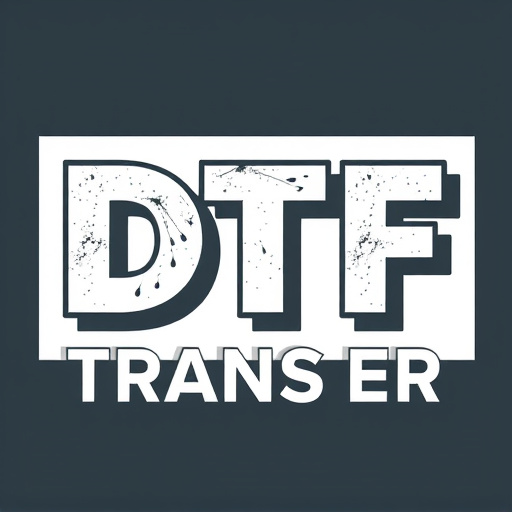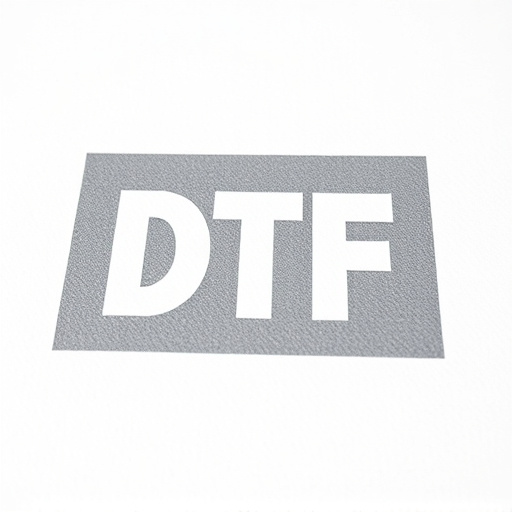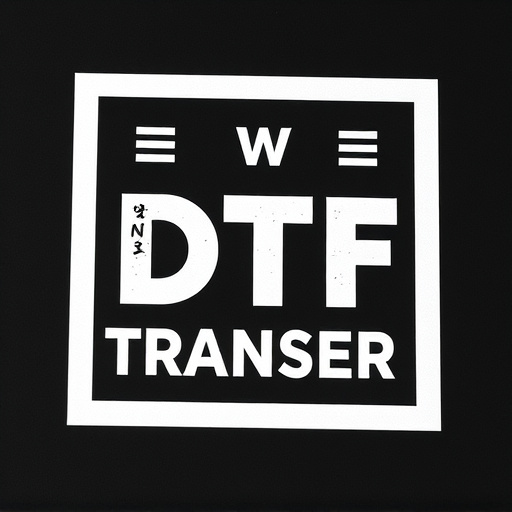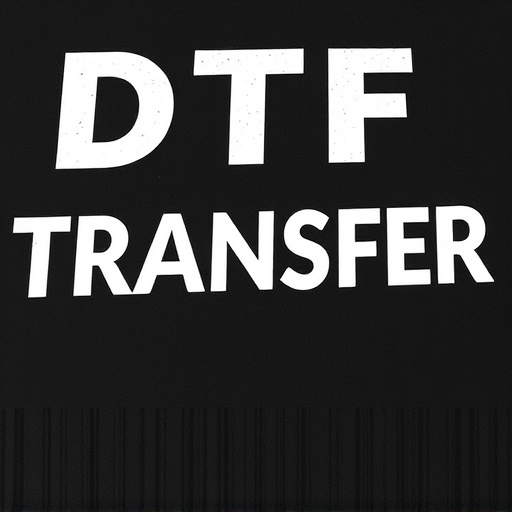Direct-to-film (DTF) transfers have revolutionized printing, offering high-quality, detail-rich prints directly from digital files. Evolving from early 20th-century methods to sophisticated digital techniques, DTF is popular among artists, commercial shops, and businesses for its precision and versatility. The process involves applying special ink to film, aligning it with a surface, and curing it with heat, demanding careful digital preparation and printing techniques. DTF benefits various sectors, from advertising and education to art, but faces challenges like color accuracy across substrates and consistent resolution. Future growth prospects include advanced technologies for intricate prints, on-demand production, and sustainable practices, making DTF an exciting and evolving method in the US market.
Direct-to-film (DTF) transfers have emerged as a game-changer in printing technology, offering unparalleled quality and versatility. This comprehensive guide explores the intricacies of DTF transfers produced in the United States, from their history and evolution to the key components and processes behind high-quality prints. We delve into the benefits for diverse industries, navigate challenges, and gaze into future trends shaping this dynamic sector. Discover how DTF Printing revolutionizes everything from apparel to signage.
- Understanding Direct-to-Film (DTF) Transfers: A Comprehensive Overview
- The History and Evolution of DTF Printing in the United States
- Key Components and Process of Creating High-Quality DTF Prints
- Benefits of Direct-to-Film Transfers for Various Industries
- Challenges and Considerations in DTF Transfer Production
- Future Trends and Innovations Shaping the DTF Industry
Understanding Direct-to-Film (DTF) Transfers: A Comprehensive Overview

Direct-to-film (DTF) transfers are a cutting-edge method of producing high-quality prints directly from digital files, eliminating the need for traditional film negatives. This innovative process has revolutionized the printing industry, offering precision and efficiency in creating accurate color reproduction. DTF technology involves transferring ink directly onto a photosensitive surface, enabling printers to produce vibrant, detailed images with remarkable speed.
DTF transfers have gained significant traction in the United States, especially among fine art printers and commercial print shops. The process allows for a wide range of media, from canvas and fine art paper to metal and wood, expanding creative possibilities. DTF Printing ensures that every detail from the digital original is preserved, making it an ideal choice for photographers, artists, and businesses seeking exceptional print quality. Its precision and versatility have made DTF one of the most sought-after methods for creating stunning visual prints in today’s market.
The History and Evolution of DTF Printing in the United States

Direct-to-film (DTF) transfers have a rich history in the United States, evolving from simple methods to sophisticated techniques over time. The inception of DTF printing can be traced back to the early 20th century when it emerged as a way to reproduce images directly onto various surfaces, including film. Initially, these processes were labor-intensive and primarily used for commercial purposes, such as creating labels and packaging. With advancements in technology, DTF Printing gained popularity among artists and hobbyists seeking unique ways to create prints from films and photographs.
Over the years, DTF transfer techniques have revolutionized, especially with the advent of digital printing technologies. Digital DTF printing allows for more precise and detailed results, making it a favorite among professionals and enthusiasts alike. Today, DTF prints can be found adorning walls, enhancing home decor, and even gracing fashion items, showcasing the versatility and artistic appeal of this once-niche technique. The evolution of DTF in the US reflects a broader trend in the printing industry, combining tradition with innovation to create visually stunning outputs.
Key Components and Process of Creating High-Quality DTF Prints

Creating high-quality Direct-to-Film (DTF) prints involves several crucial components and a meticulous process. First, the source material—whether it’s a photograph, painting, or design—needs to be digitally prepared, ensuring optimal resolution and color accuracy. This preparation is essential as it directly impacts the final print’s sharpness and vibrancy.
The DTF transfer process begins with applying a special ink to the film, which is then precisely aligned and pressed against the target surface, such as fabric, paper, or metal. Heat is applied to cure the ink, resulting in a crisp, permanent image. The key lies in maintaining precise temperature control and pressure throughout the process to avoid smudging or blurring. Skilled technicians monitor these factors, ensuring consistent quality across each print, making DTF printing a reliable method for producing high-quality, custom designs on various materials.
Benefits of Direct-to-Film Transfers for Various Industries

Direct-to-film (DTF) transfers offer a myriad of benefits across various industries in the United States. In the realm of advertising and marketing, DTF Printing enables businesses to create high-quality, visually stunning displays for outdoor advertisements, malls, and events. The precision and vibrancy of DTF prints ensure that brands can effectively communicate their messages, enhancing customer engagement.
For educational institutions, DTF Transfer serves as a game-changer in creating engaging learning materials. Teachers can quickly produce vibrant, detailed handouts, posters, and presentations, fostering better comprehension among students. In addition, DTF technology is invaluable for the arts, allowing artists to print intricate designs on various media, from canvas to ceramic, revolutionizing their creative process.
Challenges and Considerations in DTF Transfer Production

Direct-to-film (DTF) transfer production in the US faces several challenges and considerations that can significantly impact the final quality of DTF prints. One major hurdle is achieving precise color accuracy across various substrates, as different materials have unique absorptive properties that can alter the appearance of the transferred image. This requires printers to calibrate their machines meticulously and use high-quality inks designed for optimal adhesion and vibrancy on diverse surfaces.
Another crucial aspect is ensuring consistent resolution and detail retention during the transfer process. The quality of the original art or design plays a vital role, as intricate details and fine lines must be accurately reproduced. DTF printers must also account for potential issues like ink smudging, bleeding, or curling, which can be exacerbated by moisture content and substrate flexibility. Proper preparation, including surface cleaning and drying, is essential to mitigate these challenges and produce high-quality DTF prints.
Future Trends and Innovations Shaping the DTF Industry

The direct-to-film (DTF) transfer industry in the United States is poised for significant growth and evolution. With advancements in technology, we can expect to see more intricate and detailed DTF prints. 3D printing and digital imaging technologies are merging, enabling the creation of highly customized, on-demand DTF transfers with faster production times and lower costs. This shift towards digitalization promises greater accessibility for small businesses and individual artists to participate in the market.
Furthermore, sustainable practices are gaining traction within the DTF industry. Eco-friendly materials and printing methods are being developed to reduce the environmental impact of DTF transfer production. These innovations not only address consumer demand for greener products but also contribute to a more responsible and resilient future for the industry.














